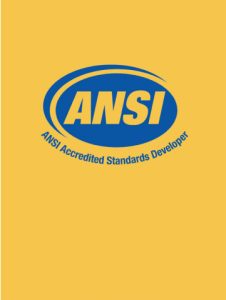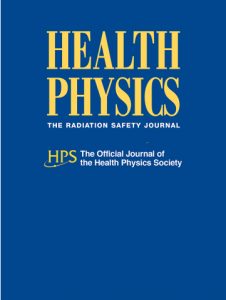Kenneth R. Foster, University of Pennsylvania
June 2011
At the end of May 2011, the World Health Organization classified exposures to radiofrequency (RF) energy from use of wireless telephones, including cell phones, as “possibly carcinogenic to humans” (WHO/IARC 2011). Why this classification and what does this mean?
The International Agency for Research on Cancer (IARC), a part of the World Health Organization, conducts research on the causes of human cancer and reviews other research findings on exposures and exposure situations with respect to cancer risks. In a formal process, IARC reviews the available information on exposures to various agents and classifies the agents according to the strength of evidence that they cause cancer to humans under real-world exposure conditions. IARC uses five categories ranging from “probably not carcinogenic to humans” (Group 4) to “carcinogenic to humans” (Group 1) (IARC 2011).
IARC coordinated the largest series of cell phone studies to date, whose main findings were released in 2010. The authors of that report concluded that there was no convincing evidence that cell phone use caused brain tumors (Cardis et al. 2007, 2010). The 2010 summary paper noted an apparent increase in risk for a malignant tumor (glioma) with heavy use of cell phones over a 10-year period. The increases were close to the edge of detection and, as the authors pointed out, technical limitations of the studies made it difficult to interpret these results as indicating a causal connection between cell phone use and cancer.
In this recent review, IARC assembled a panel of experts to review these and other studies related to exposure to RF energy and cancer. IARC concluded that there is “limited“1 evidence for an increase of gliomas among users of wireless telephones, but evidence was inadequate2 to draw conclusions for other brain tumors (WHO/IARC).
As a result of this review, the IARC panel classified RF fields from cell phones as 2B – “possibly” carcinogenic to humans with respect to glioma. This is IARC’s weakest carcinogen classification, indicating some level of suspicion that RF exposures from use of cell phones may cause cancer in humans, but without concluding that it actually or probably does.
This classification is consistent with current statements of the U.S. Food and Drug Administration and other agencies (including the Health Physics Society [HPS 2010]) that the weight of evidence is insufficient to declare that RF fields have health consequences at exposure levels within safety limits. The impact of this new classification on the recommendations of health agencies is unclear at present but may not be great.
Already present in the 2B category are gasoline, engine exhaust, coffee, and talc-based body powder, as well as magnetic fields from power lines. Shift work (working different shifts on a regular basis, causing irregular sleep cycles) is classified as a “probable” carcinogen (Group 2A) on the basis of stronger evidence than that linking cell phones and brain cancer. Other common exposures classified in Group 1, known carcinogens, include alcoholic beverages and secondhand smoke. (The listing of items and their categories can be found at http://monographs.iarc.fr/ENG/Classification/index.php.) It is important to note that these classifications are with respect to only one outcome (cancer) and not toxic effects in general. Moreover, the IARC classifications have no relation to the magnitude of possible risk; glioma is a rare tumor and the increases in risk mentioned by IARC (40 percent increase in glioma risk in the highest category of users over a 10-year period) represents risks to an individual that are much smaller than many other risks faced by an individual in daily life.
What does it mean to you? If you have concerns, use a headset or speaker phone or send text messages. Parents may choose to limit their children’s use of cell phones on “precautionary” grounds even though health agencies have not identified convincing evidence for any health problem. Parents need to assess the benefit to their children in using cell phones (including better communication with caregivers) against the variety of known risks from abuse of cell phone use—and now the “possible” link between long-term use of cell phones and cancer.
1According to IARC, “limited” means a “positive association has been observed between exposure to the agent and cancer for which a causal interpretation is considered to be credible, but chance, bias or confounding could not be ruled out with reasonable confidence.”
2According to IARC, “inadequate” means the “available studies are of insufficient quality, consistency or statistical power to permit a conclusion regarding the presence or absence of a causal association between exposure and cancer, or no data on cancer in humans are available.”
References
Cardis E, Richardson L, Deltour I, Armstrong B, Feychting M, Johansen C, Kilkenny M, McKinney P, Modan B, Sadetzki S, Schüz J, Swerdlow A, Vrijheid M, Auvinen A, Berg G, Blettner M, Bowman J, Brown J, Chetrit A, Christensen HC, Cook A, Hepworth S, Giles G, Hours M, Iavarone I, Jarus-Hakak A, Klaeboe L, Krewski D, Lagorio S, Lönn S, Mann S, McBride M, Muir K, Nadon L, Parent ME, Pearce N, Salminen T, Schoemaker M, Schlehofer B, Siemiatycki J, Taki M, Takebayashi T, Tynes T, van Tongeren M, Vecchia P, Wiart J, Woodward A, Yamaguchi N. The INTERPHONE study: Design, epidemiological methods, and description of the study population. European Journal of Epidemiology 22(9):647-664; 2007.
Cardis E, Deltour I, Vrijheid M, Combalot E, Moissonnier M, Tardy H, Armstrong B, Giles G, Brown J, Siemiatycki J, Parent ME, Nadon L, Krewski D, McBride M, Johansen C, Collatz CH, Auvinen A, Kurttio P, Lahkola A, Salminen T, Hours M, Bernard M, Montestruq L, Schuz J, Berg-Beckhoff G, Schlehofer B, Blettner M, Sadetzki S, Chetrit A, Jarus-Hakak A, Lagorio S, Iavarone I, Takebayashi T, Yamaguchi N, Woodward A, Cook A, Pearce N, Tynes T, Blaasaas KG, Klaeboe L, Feychting M, Lönn S, Ahlbom A, McKinney PA, Hepworth SJ, Muir KR, Swerdlow AJ, Schoemaker MJ. Brain tumour risk in relation to mobile telephone use: Results of the INTERPHONE international case-control study. International Journal of Epidemiology 39(3):675-694; 2010.
Health Physics Society. Mobile telephones. Health Physics Society Fact Sheet. 2010. Available at: http://hps.org/documents/Mobile_Telephone_Fact_Sheet_update_May_2010.pdf. Accessed 2 June 2011.
International Agency on Cancer Research. Agents classified by the IARC Monographs, Volumes 1–101. France: World Health Organization, International Agency on Cancer Research; 2011. Available at: http://monographs.iarc.fr/ENG/Classification/index.php. Accessed 2 June 2011.
World Health Organization/International Agency on Cancer Research. IARC classifies radiofrequency electromagnetic fields as possibly carcinogenic to humans. France: World Health Organization, International Agency on Cancer Research; 2011. Available at: http://www.iarc.fr/en/media-centre/pr/2011/pdfs/pr208_E.pdf. Accessed 2 June 2011.






